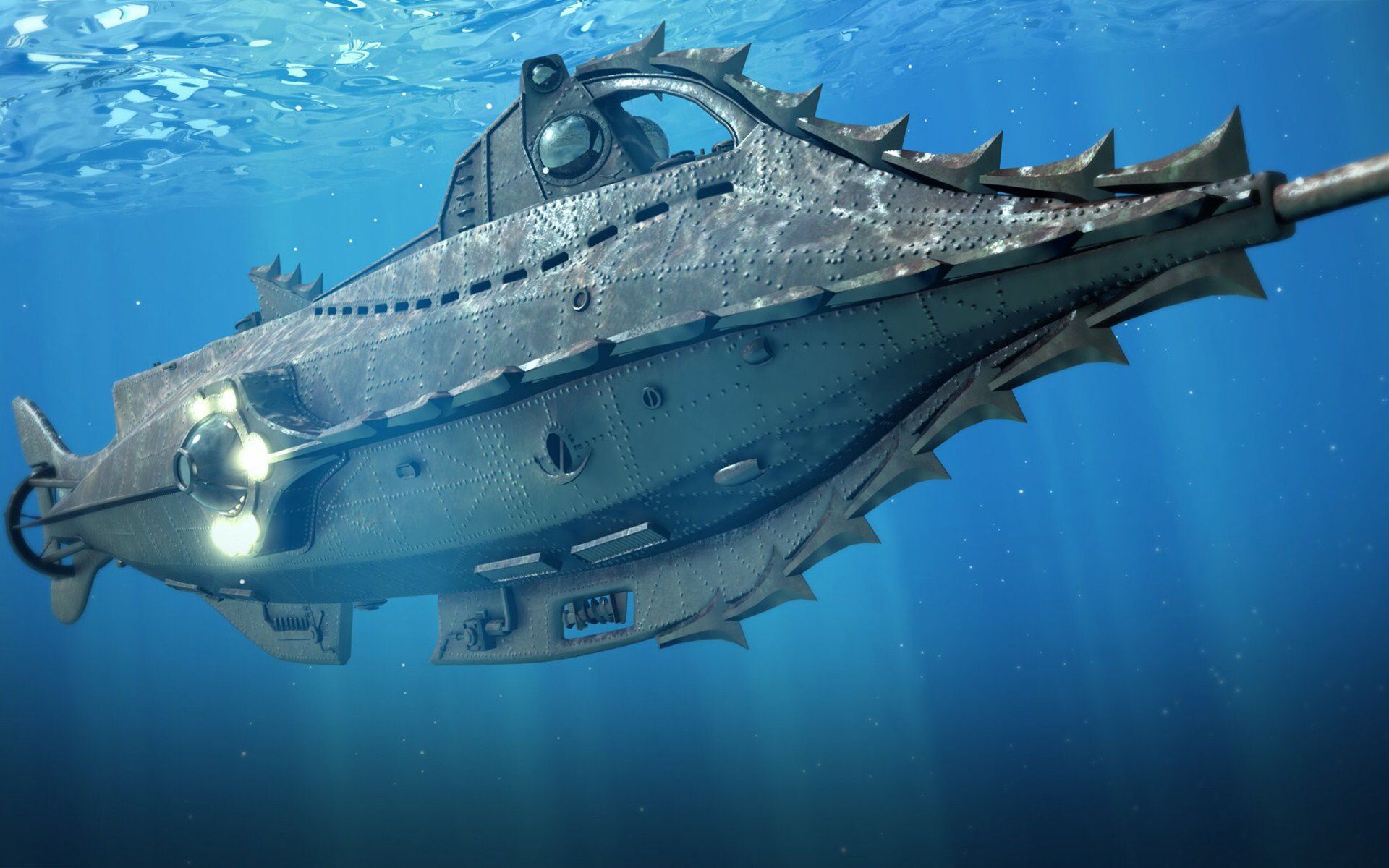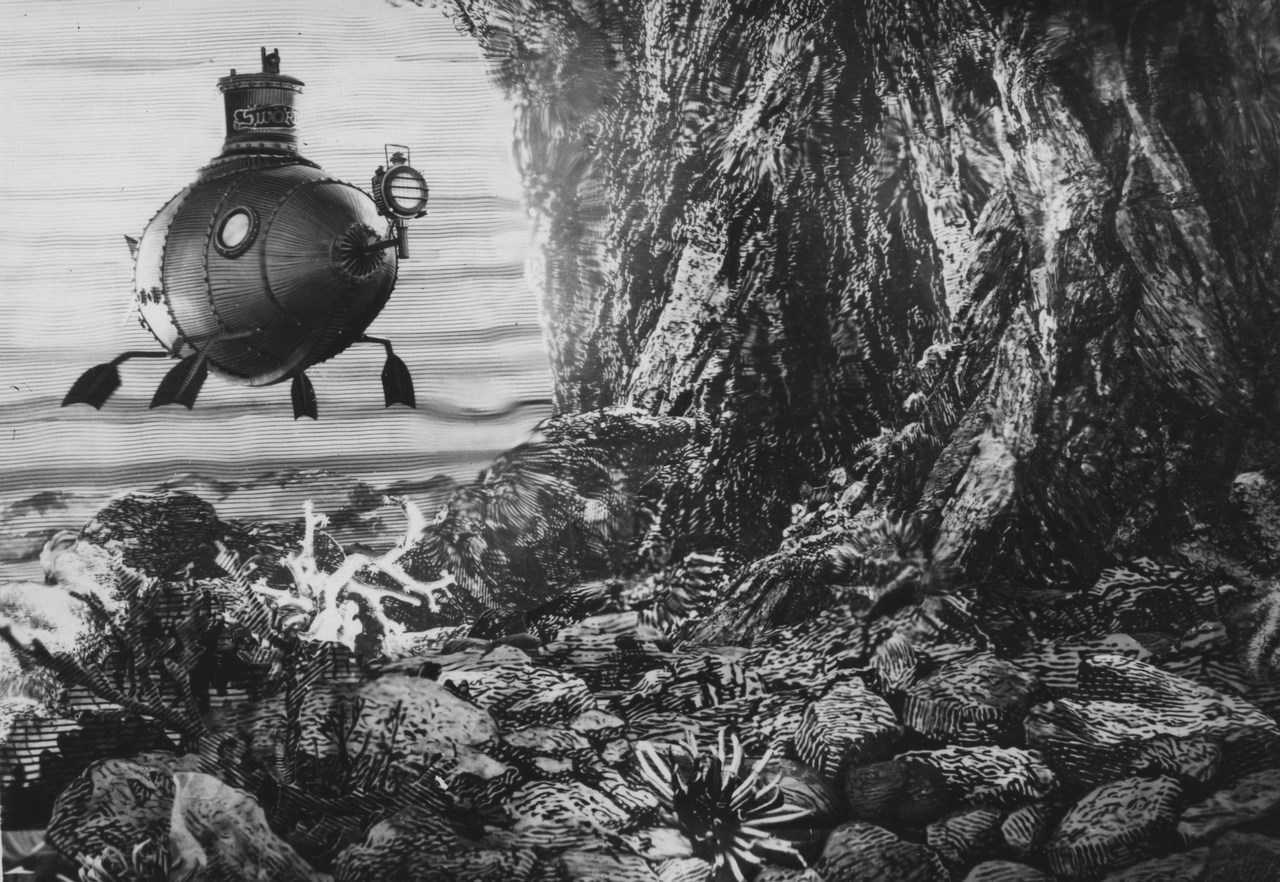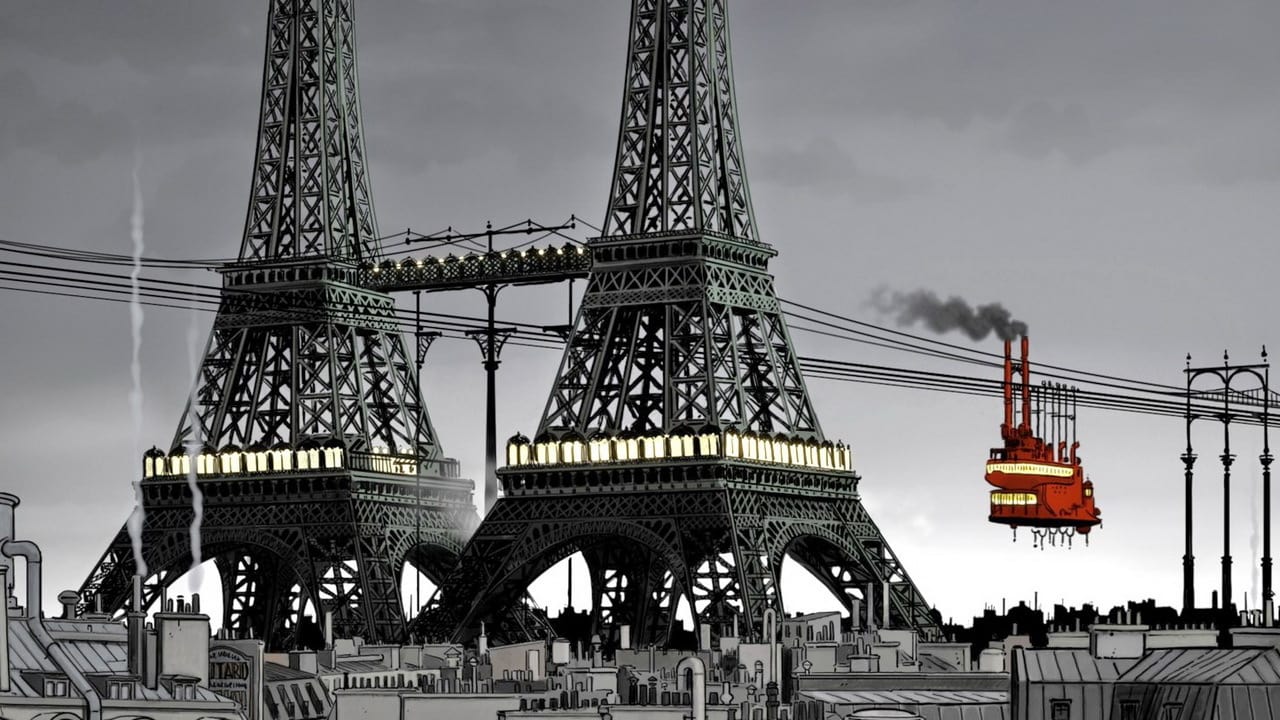Steampunk is a form of science-fiction based on the imagined possibilities of Victorian technologies and Steampunk Films deals with cinematic examples. Steampunk is dominated by images of deliberately antiquarian machines based around steam technology. The design schemes borrow from Victorian industrialism – bolted boilerplates, clockwork parts, pistons and spinning flywheels, brass fittings, wood interiors and (sometimes) early developments of electricity.
Crucial to Steampunk is the common locus of Victorian England and Europe and a celebration of the new technological upheaval that had begun in the aftermath of the Industrial Revolution (although there have been several entries that place Steampunk technology in a Western setting). Stories are usually peopled by elegant English aristocracy, stalwart explorers and Dickensian street urchins. (19th Century divisions between upper and lower classes seem an unquestioningly assumed fixture in all of these stories).
Steampunk can be a full Alternate History depicting widespread changes in the existing timeline. Or just as easily it can exist as a single or several Steampunk-styled inventions in a period adventure with no implied alteration to existing history.

Some genre commentators have been so broad in their interpretations of what makes Steampunk Films to refer to anything fantastical or that features mechanical devices and takes place in a period setting to be Steampunk –the IMDB, for instance, lists Beauty and the Beast (1991), the Pirates of the Caribbean films and Fantastic Beasts and Where to Find Them (2016) as the most popular Steampunk works but these do not meet the criteria in the definition offered on this site.
To be clear, Steampunk is primarily a fantasy of an imagined technology and takes place in and around the late 19th Century/early years of the 20th Century. It is more about imagined alternate technology that might have emerged from the Victorian period than necessarily a fashion sense or works set in a certain period.
Stories set in the Victorian era that merely have fantastical elements such as those featuring Count Dracula, Sherlock Holmes, Dr Jekyll/Mr Hyde and Jack the Ripper are dealt with in Victorian Gaslight Milieu.
Proto-Steampunk Works
The interesting thing about Steampunk films is that they predate the emergence of Steampunk as a literary genre, even the coining of it as an actual term. The first film that could be called Steampunk was Disney’s beautiful lush adaptation of Jules Verne’s 20,000 Leagues Under the Sea (1954) and its depiction of a fabulous 19th Century Victorian submarine The Nautilus outfitted in bolted metal plates, brass fittings and lush velvet interiors.
The popularity of 20,000 Leagues Under the Sea led to a spate of Verne and H.G. Wells adaptations over the next few years and the Steampunk look spread through these. Of particular note was Karel Zeman’s The Fabulous World of Jules Verne (1958), which features Victorian submarines, bicycle-pedalled airships and miniature submersibles, all designed in the style of the original lithographs that illustrates Verne’s books. This is perhaps the purest live-action evocation of Steampunk on screen to date. Zeman later returned to Verne and Steampunk inventions with the far more comical The Stolen Airship (1967).
Other Verne-adapted works of the era that we can include here are From the Earth to the Moon (1958) depicting the construction of a 19th Century rocket to The Moon, and Master of the World (1961) with Vincent Price as the inventor of a fabulous airship. Also of note was Mysterious Island (1961) based on Verne’s 20,000 Leagues sequel and featuring a brief return appearance from Nemo and The Nautilus. The original was remade as the period-set 20,000 Leagues Under the Sea (1997) and the tv mini-series 20,000 Leagues Under the Sea (1997).

There were other assorted hangers on to Verne’s name such as Jules Verne’s Rocket to the Moon (1967) where Phineas Barnum attempts to build a Moon rocket, and Captain Nemo and the Underwater City (1969), which features The Nautilus and an entire underwater city built by Nemo. The outrightly comical Around the World in 80 Days (2004) also features assorted anachronistic Steampunk vehicles.
These Verne adaptations sat alongside a series of adaptations of Verne’s contemporary H.G. Wells. The most notable of these was the classic adaptation of The Time Machine (1960) with its uniquely designed Victorian time machine. Also included here could be The First Men in the Moon (1964) and its later remake The First Men in the Moon (2010) about Victorians undergoing a flight to The Moon in a ship powered by an anti-gravity substance.
One could also include other works of this era such as the Edgar Rice Burroughs adapted At the Earth’s Core (1976) with its fabulous Victorian drilling mole and Warlords of Atlantis (1978), an original work from the same creative team, with explorers in a bathysphere visiting Atlantis that is inhabited by Martians.
Modern Steampunk Works
The abovelisted were all made before Steampunk was identified as a distinctive genre. The following are works that have been after Steampunk began to be put down in literary science-fiction by authors such as K.W. Jeter (who coined the term ‘steampunk’ in 1987), James Blaylock, Michael Moorcock, Christopher Priest and others.
The modern era has yet to offer a full-blooded live-action Steampunk film. This is something that remains a possibility for some future filmmaker. Animation however is a different story and some of the best examples of the genre to date have been made there.
i) Live-Action Examples
There are a number of films that features tales set in the Victorian era and contain Steampunk devices. These might include:-
- Young Sherlock Holmes (1985), which features assorted inventions and a flying machine in the background
- The League of Extraordinary Gentlemen (2003), featuring a meet-up of characters from Victorian fiction, a magnificently designed Nautilus and Victorian-era car races
- The Prestige (2006), a story about rival stage magicians who employ electrical teleportation technology created by Nikola Tesla
- Sherlock Holmes (2009), a low-budget Holmes adventure featuring steam armour, robots, mechanical dragons and balloons with copter vanes
- Gentlemen Explorers (2013), a low-budget film featuring a duo of mythological artifact hunters armed with steam weaponry
- Outpost 11 (2013), a low-budget film set at an Arctic outpost in the 1950s during ‘The Second Hundred Years War’, concerning the paranoia among the men stationed there
- the Wu Xia films Taichi Zero (2012) and Taichi Hero (2012) that feature a steam tank and an ornithopter
- Yorgos Lanthimos’s revisionist Frankenstein film Poor Things (2023)
There have been several efforts that place Steampunk devices in a Western setting with the tv series’ The Wild Wild West (1965-9), The Adventures of Brisco County, Jr. (1993-4) and Legend (1995) and the films Back to the Future Part III (1990) and Wild Wild West (1999).
There have been some interesting uses of Steampunk in a fantasy setting. Tin Man (2007) was a SF retelling of The Wizard of Oz (1939) where Oz and the Wicked Witch are depicted in a Steampunk-designed world, or Sucker Punch (2011) with its fantasy sequences featuring steam zombies, robots and zeppelin action. The most fully developed of these was the Russian-made Abigail (2019), which creates an interesting alternate reality where Steampunk inventions sit alongside magic. The tv series The Nevers (2019- ) concerns a group of superpowered women in Victorian England, including one character who is constantly building Steampunk-styled gadgetry.
The Three Investigators in the Secret of Haunted Castle (2009) was a present-day work about juvenile investigators in the present who discover a haunted mansion built with steam devices.
Despite the title, Steampunk Samurai Biker Chick (2012) is a painfully low-budget future-set film with no steampunk elements.

ii) Animation
The most fully realised works of the modern era come in animation with the Katsuhiro Otomo anime Steamboy (2004) set in Victorian England and featuring steam monocycles, tractors and airships. The climax of the film features a steam-powered army and a steam battle palace. The French April and the Extraordinary World (2016) builds out an elaborate alternate history vision of a Steampunk Paris. Both of these films are the most full-blooded treatment of the genre so far.
Disney’s Atlantis: The Lost Empire (2001) features an adventure in a magnificent submarine as explorers set forth in search of Atlantis. There was also Michel Ocelot’s Dilili in Paris (2018), an animated film set in Paris during the Belle Epoque as a young girl encounters many of the real-life figures of the era amid assorted Steampunk-styled inventions. There are other assorted vehicles that appear in the much more fantastical Jack and the Cuckoo-Clock Heart (2013).
Animation has also produced War of the Worlds: Goliath (2012), a sequel to the H.G. Wells novel set in an alternate history 1914 where humanity has reverse-engineered Martian technology to build a series of war machines of their own to fight off a second Martian invasion. The anime The Empire of Corpses (2015) imagines an alternate 19th Century history based on the employment of Frankenstein science by various countries.
Recommendations
- 20,000 Leagues Under the Sea (1954)
- The Fabulous World of Jules Verne (1958)
- The Time Machine (1960)
- Master of the World (1961)
- The Stolen Airship (1967)
- Warlords of Atlantis (1978)
- The Adventures of Brisco County, Jr. (tv series, 1993-4)
- Atlantis: The Lost Empire (2001)
- Steamboy (2004)
- The First Men in the Moon (2010)
- War of the Worlds: Goliath (2012)
- April and the Extraordinary World (2016)
- Dilili in Paris (2018)
- Abigail (2019)
A full list of titles can be found here Steampunk Archives

